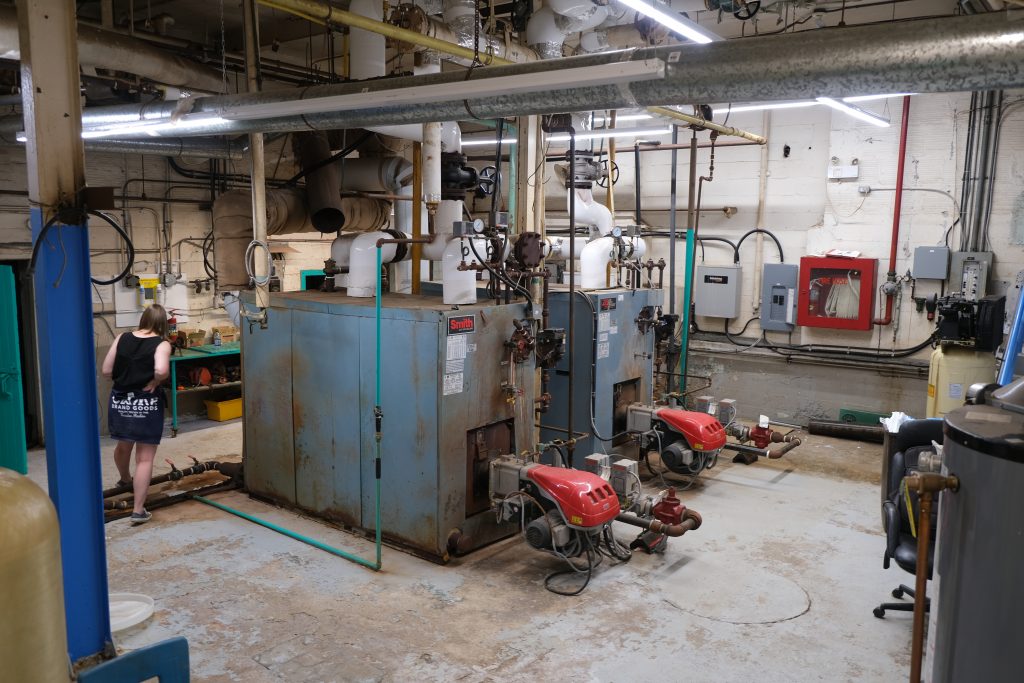
UnBQ Boiler Room
The boiler room and former coal shoot at Universit…
Read moreThe 3rd Floor of University nuhelot’įne thaiyots’į nistameyimâkanak Blue Quills (UnBQ). This floor originally contained staff rooms and teaching spaces. Click on the triangle to load the point cloud. Labels on the point cloud indicate past room functions.

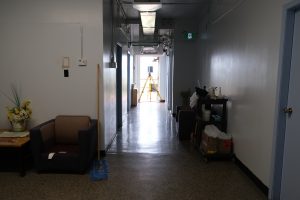
Today the third floor of University nuhelot’įne thaiyots’į nistameyimâkanak Blue Quills (UnBQ) houses a combination of offices and classroom spaces. When in operation as a residential school, this floor was used primarily by staff who lived at the school. Throughout the years, the third floor also contained classrooms and other teaching spaces, such as the sewing room.
Fire escapes were located directly off the stairwells, and led from the roof down to the back parking lot of the building. Students would sometimes sneak out of the school via fire escapes, sometimes to steal food or go into town. As with other floors, the boys’ area was located on the east side of the school, and the girls’ dormitory on the west side. The senior dormitories were for students aged fourteen and above. The number of beds in these dorms likely changed through the years – especially as overcrowding became more of a problem. A small sink and bathroom was also attached to each dorm.
Public bathing was a traumatic experience for many students. The cutting off of hair and the use of powders and oils in an ill-conceived attempt at ridding children of lice were horrifying experiences. At the Alberta hearing in 2013, Margaret Cardinal reflected on the horror of having her hair cut off at BQ where she was “herded off to the showers” and was later forced to participate in the abuse by the school administration who made her scrub the younger children (Cardinal, 2013).
Students did not have personal belongings with them during their stay. Upon arrival to the school, children were stripped of their personal belongings and assigned a number with corresponding school uniform. The clothing the children wore to the school would be bundled up and kept in these cupboards, only to be returned when the children returned home.
The girls’ dormitory has since been converted into a classroom, boardroom, offices, and storage space, and the boys’ into a classroom and offices. At the time of operation, each dormitory would have each been one large room. Adjacent to each dormitory was a bedroom for a staff member. These bedrooms were located beside the dormitories so staff could easily monitor students’ behaviour at all hours.
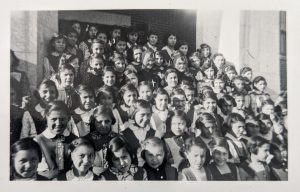
Denominational rivalries were another reason residential schools like Blue Quills were overcrowded, and churches often competed for students against schools run by churches of other faiths. For instance, despite already being overcrowded, Joseph Guy OMI requested that Sacred Heart increase its pupilage 25% – from 60 to 75 – because otherwise the children would be sent to a Protestant school. In this case, the OMI proposed that they use one of the old decommissioned mission buildings as a dormitory for these children while they awaited a new BQ building.
This resulted in chronic over crowding at all three schools and left little flexibility for accommodating students if buildings were damaged due to a fire or flooding.
Left click and drag your mouse around the screen to view different areas of each room. If you have a touch screen, simply drag your finger across the screen. Your keyboard's arrow keys can also be used. Travel to different areas of the third floor by clicking on the floating arrows.
This image gallery includes modern and archival photos of UnBQ's 4th floor

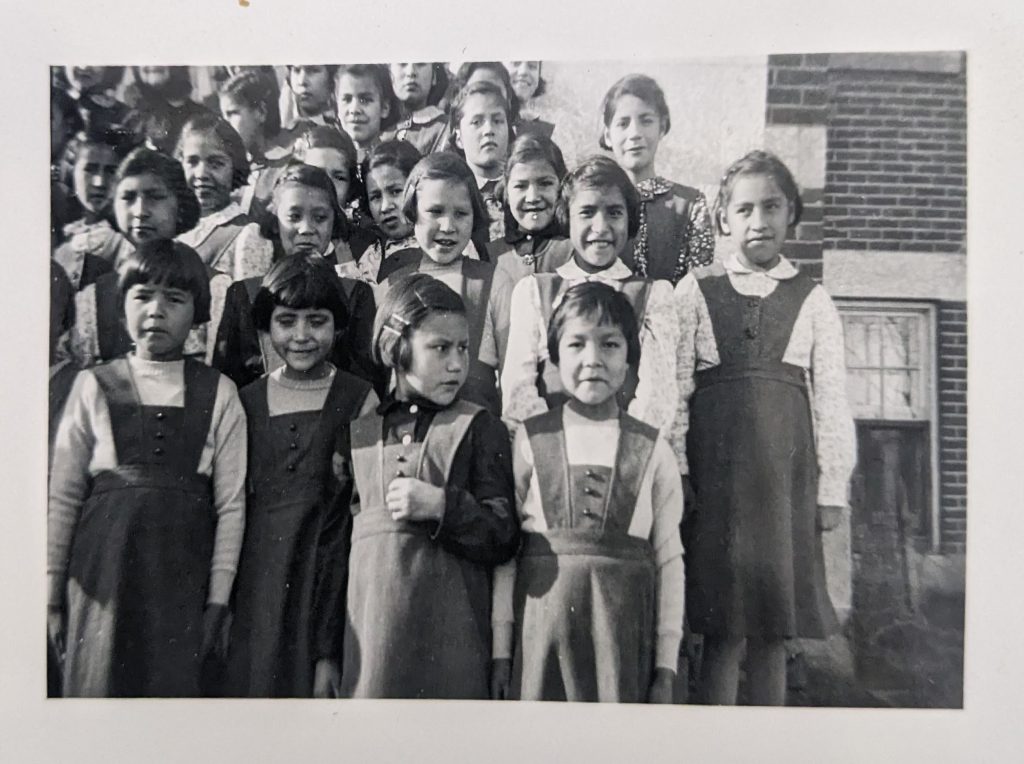

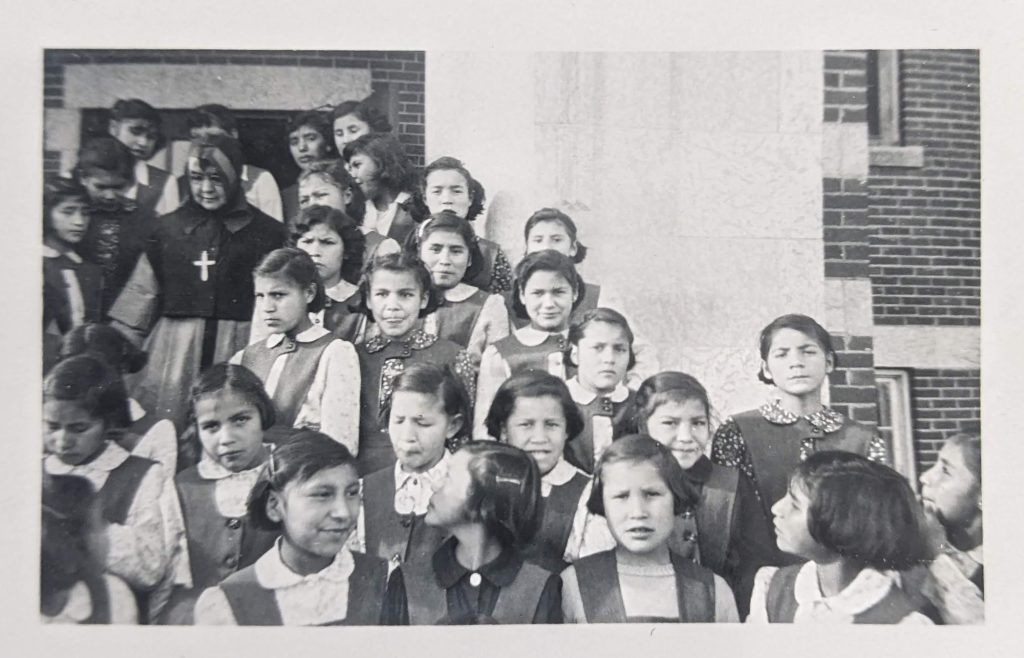
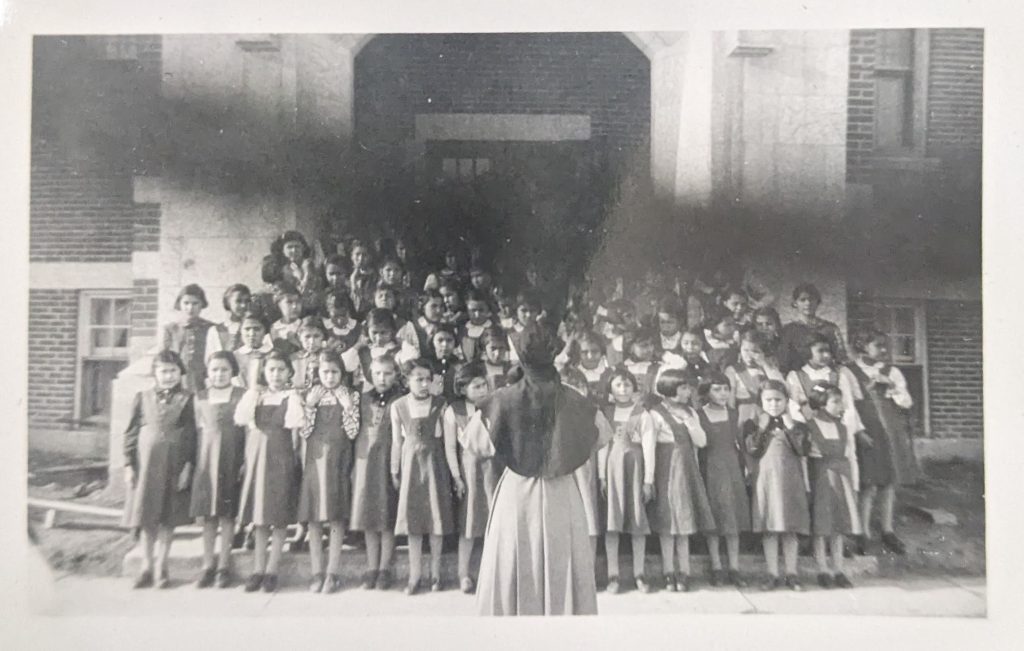













Laser scanning data can be used to create “as built” architectural plans which can support repair and restoration work to Old Sun Community College. This plan was created using Autodesk Revit and forms part of a larger building information model (BIM) of the school. The Revit drawings and laser scanning data for this school are securely archived with access controlled by the Old Sun Advisory Committee.
Some of the threats faced by Indigenous students attending residential schools came from the buildings themselves. The architectural plans contained in this archive, which have been constructed using the laser scanning data, illustrate how poorly these schools were designed from a safety perspective. There were three specific areas that placed the health and safety of students at great risk: Fire Hazards and Protection Measures; Water Quality, and Sanitation and Hygiene. As you explore the archive, you will find more information about the nature of these hazards and their impact on students.

I come from a traditional family, and I know, I know I paid dearly when I got, when I went back to boarding school.
I spent a lot of time with my nose on the wall or in the corners, with books on my hands until I fainted. I couldn’t, I refused to lose my Cree because I have a disabled brother. If I lost my Cree, I wouldn’t be able to communicate with him, I couldn’t communicate, communicate with my grandparents. And so I was stubborn, and I know that they can hurt me physically, but in my mind they didn’t.
So when I, every time I spent my nose on the wall, I would be singing to myself in Cree or I would repeat all the stories my grandfather told me. When I was in grade five I did, I wrote small comic books about the stories my grandfather told me, and those were taken away by the nuns. I often wonder whether or not they burned them or they kept them.
The most awful time in classes was my grade three, I had a teacher from hell. In grade three, it was really hard for me to go to the classroom. I would be almost throwing up, getting sick because I was so scared of the teacher. I and this other boy, who’s now passed away, we’re always picked on by the teacher. We always had welts, either on our hands, or on our shoulders, on the back of our heads.
Because we couldn’t read, if she gave us books, I just… it was so hard to open the book. I couldn’t even read the word “the.” Just three letters, I couldn’t say “t”, because every time I look at the book, I would be shaking and I would have butterflies, I just needed to go to the bathroom. And I was just so scared because I knew she was behind me.
And she’d get so mad that she would hit us, to the point where we couldn’t even read, it was so hard. For a long time I couldn’t read in front of anybody because I was always afraid.
– Margaret Cardinal
Margaret Cardinal Testimony. SP118_part16. Shared at Slave Lake Hearing Sharing Panel. June 18, 2013. National Centre for Truth and Reconciliation holds copyright. https://archives.nctr.ca/SP118_part16


The boiler room and former coal shoot at Universit…
Read more
The Library at University nuhelot’įne thaiyots’į n…
Read more
The 2nd Floor of University nuhelot’įne thaiyots’į…
Read more
The 1st Floor of University nuhelot’įne thaiyots’į…
Read more
The basement of University nuhelot’įne thaiyots’į…
Read more
The University nuhelot’įne thaiyots’į nistameyimâk…
Read more